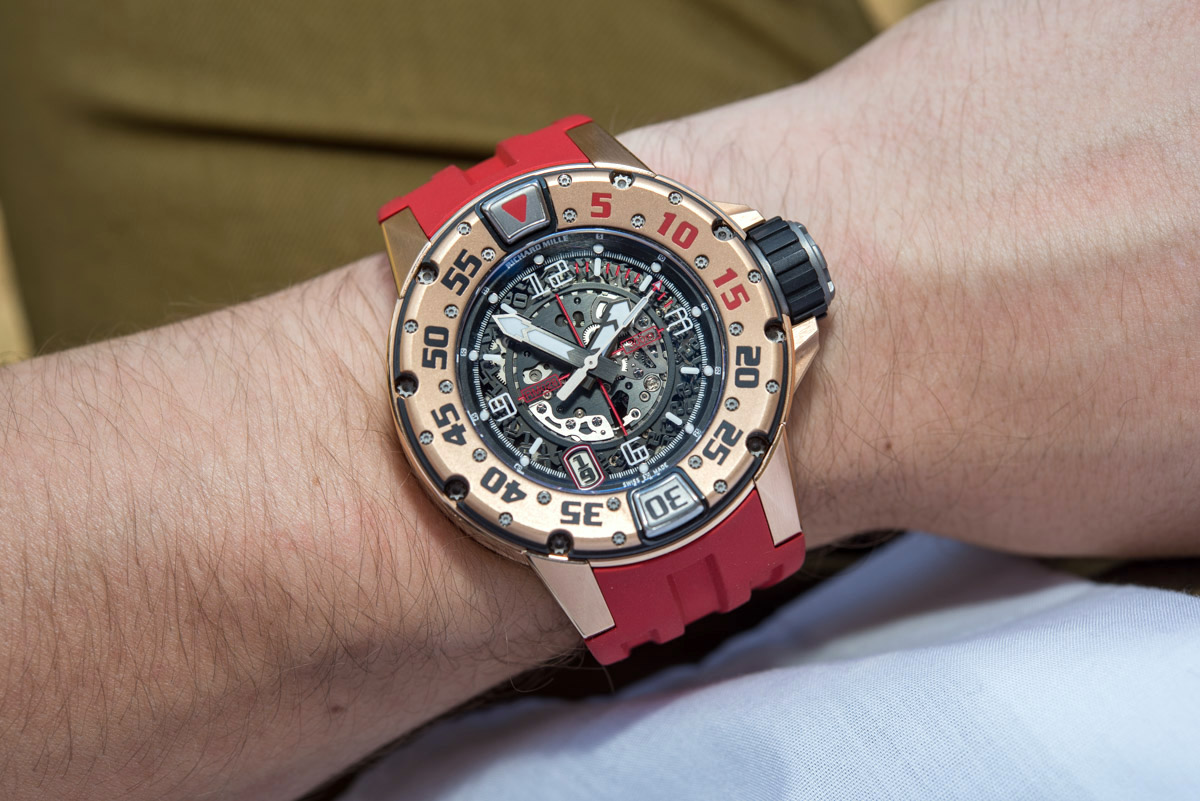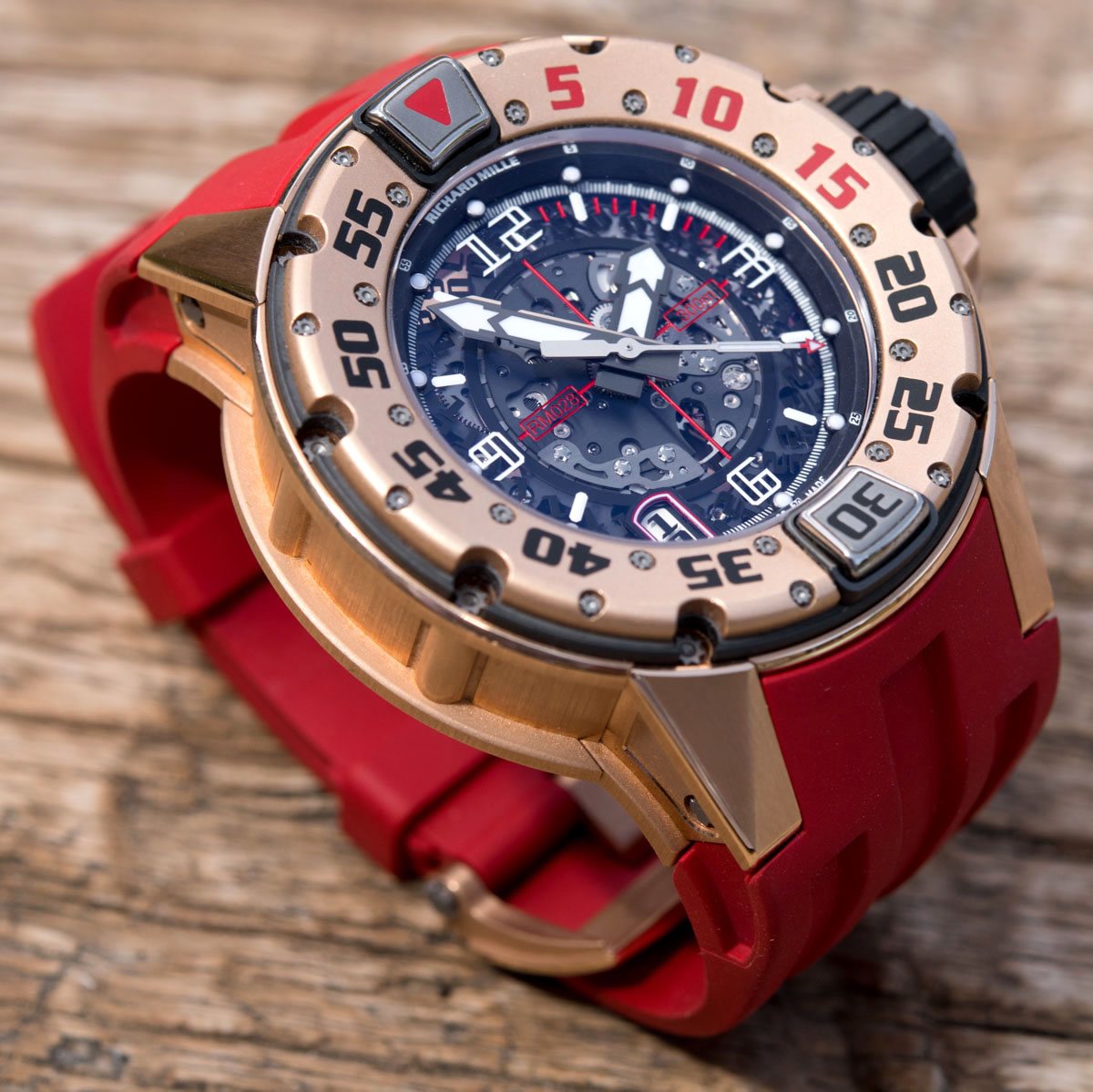
Third point was inimitable aesthetics. Dive watches that were designed to comply with ISO 6425 dive watch regulations and standards, such the RM 028, are destined to look at least a little bit alike. They’ll all have a unidirectional timing bezel for a 60-minute interval with 5 minute graduations, large lumed hands, a running seconds indicator and a robust case to support ample water resistance. Sure, some of these requirements can be executed more creatively than others. Whereas the tonneau cases of Richard Mille, or even the round case of the RM 033 (reviewed here) are a very specific Richard Mille look, this diver, for the aforementioned reason, sticks out a bit – simply because it has to comply with those requirements. Still, if you know watches at least a bit, you won’t confuse this watch with anything else out there. So in this sense the RM 028 once again performs as well as it can, given its self-imposed limitations (meaning you can’t make an ISO certified dive watch look much different in the same way you can’t make solid gold light).
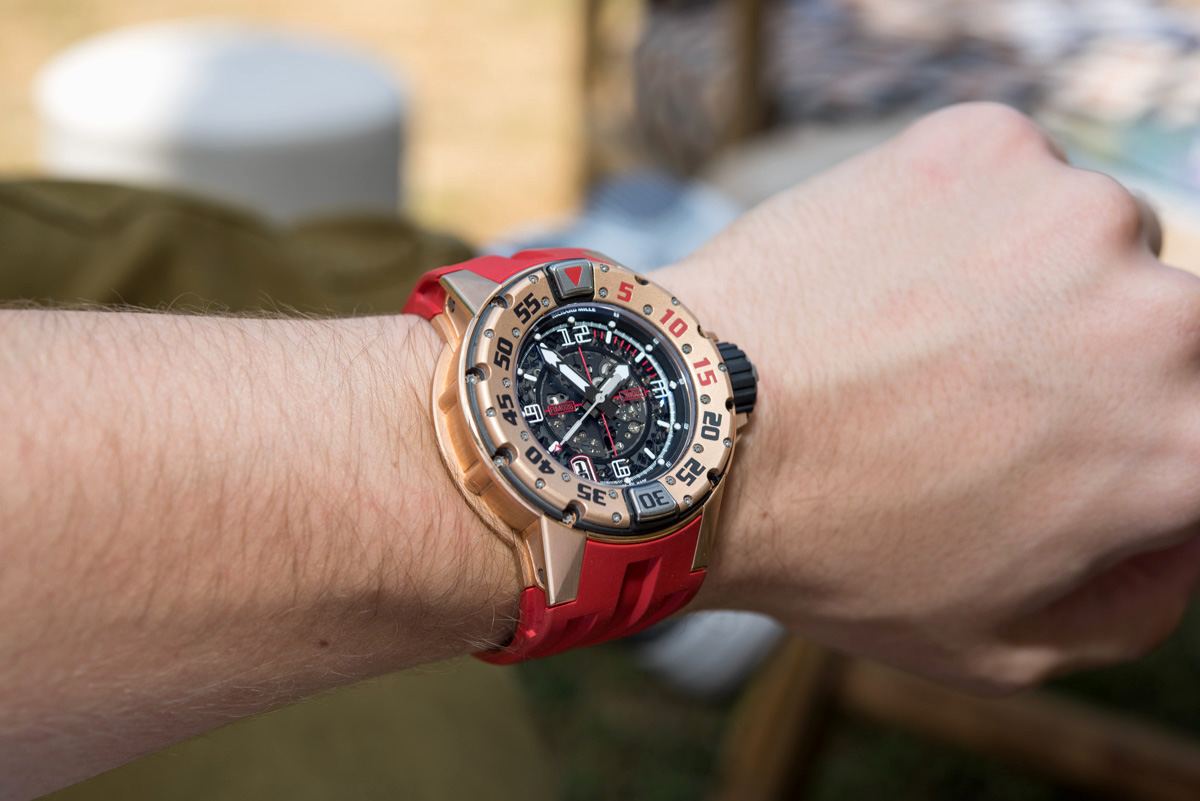
The last point was cutting edge quality of execution; and with that, we have at last arrived to the “no ifs or buts” aspect. It is here when one could (and many do) say: “for that kind of money, that should be a given!” Well yes, it should be, but then again, in the broader luxury watch segment, it isn’t. Where the RM 028 falls a bit behind the rest of RM watches because of it wanting to be a pro dive watch, it can, in return, shine with its many technical elements and the execution of its bolt-ons. Every single piece is machined from a solid block of something. Nothing is stamped or cast to shape and that is just such a joy to admire when taken to such levels. It’s an apples to oranges thing, really, when comparing this case to most all other watches from major brands in this segment. Just look at what the usual suspects have been up to in recent years: tame and safe stuff even at the very high end as far as anything outside the movement is considered. I miss the Extreme L.A.B. 2 sorts of things from the major brands – that is what I’m talking about.
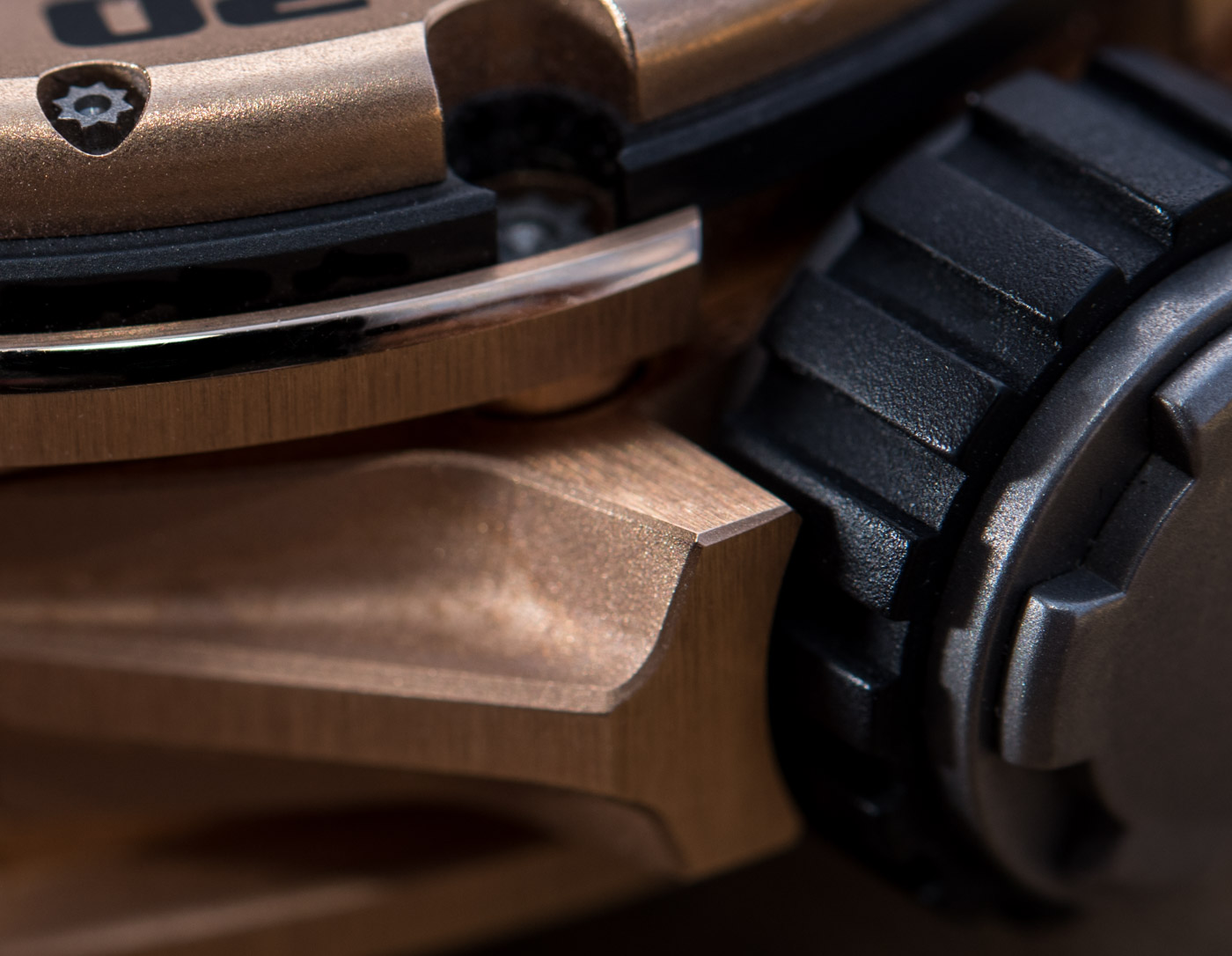
Just look at this shot above: a neat, hand-polished and curved ribbon (much slimmer than this shot might lead you to believe) tears up a vertical polished edge, with two small, grade 5 titanium torque “spline screws” (one in the deep cut-out on the upper center of the shot) shown here from a total of more than 2 dozen of them between the case and bezel, a crown guard with beveled and narrowing edges, a large, screw-down crown (I believe also in titanium with a rubber sleeve), all set alight by the old-school glitter of gold. Even the edge of the countersink of the small bezel screw is beveled.
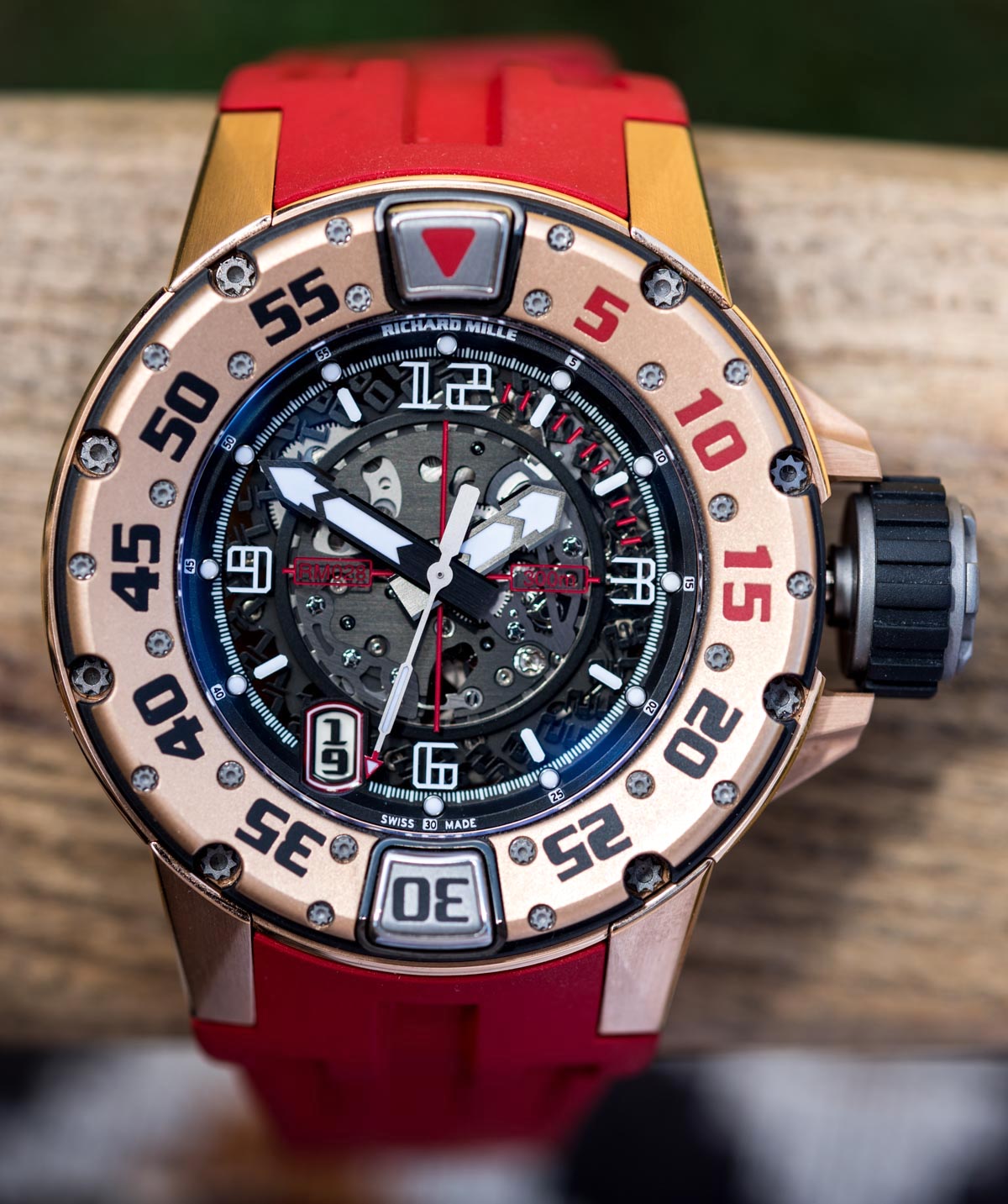
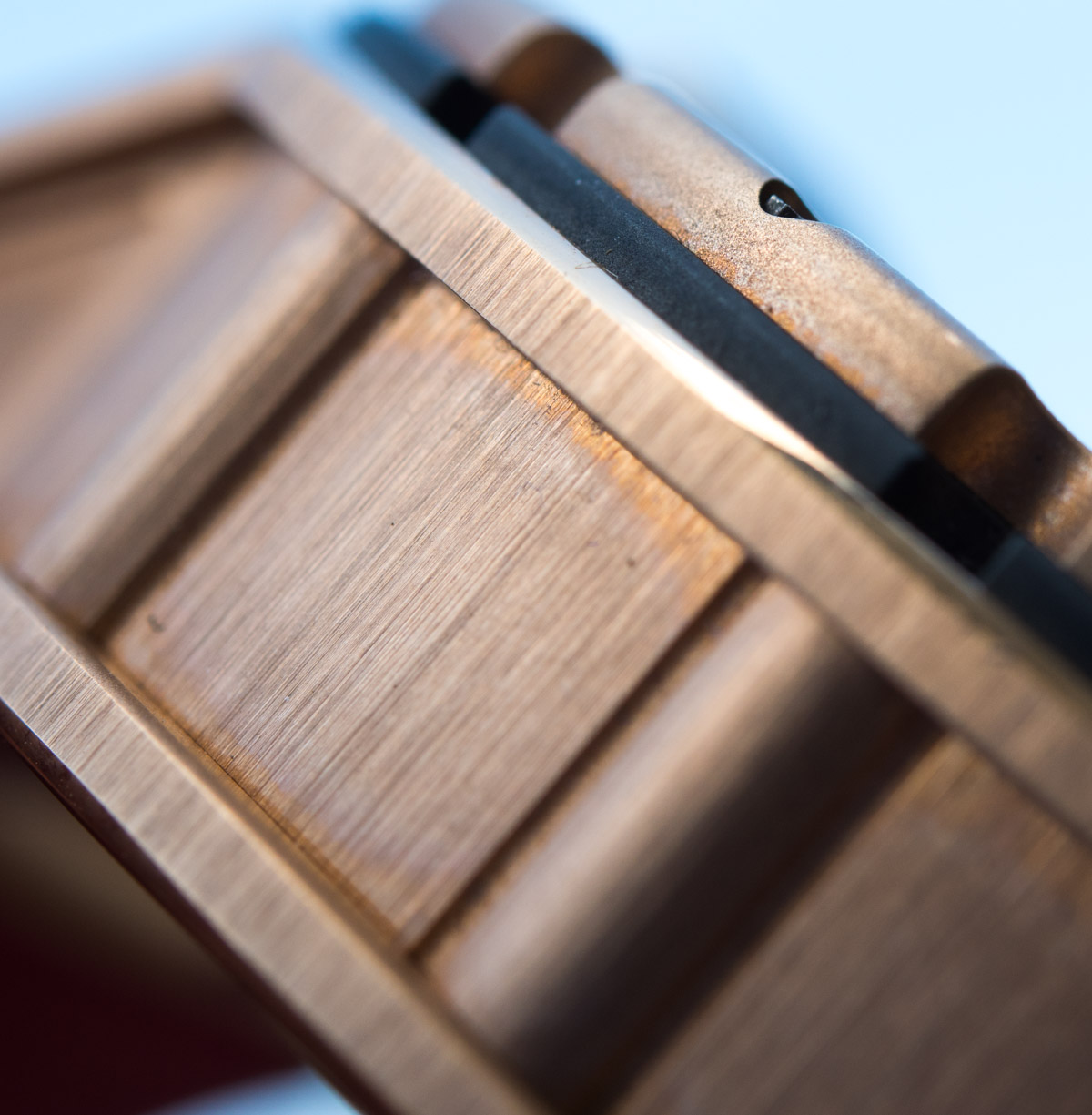
The fit and finish of all the parts, despite many complex angles and shapes coming together, is second to none – and that’s been consistent across every Richard Mille I’ve seen and macro photographed. It’s absolutely outstanding and whoever is responsible for this at the company, they all deserve a raise, as far as I’m concerned. The same holds true for the dial side that, mind you, features some of the most bonkers main hands you’ll find anywhere. Properly thick, beveled, polished, and lumed, these remind me of the hysterically oversized broadswords in Japanese cartoons and computer games – though I’ll own up to that being a weird association. The dial is a 0.40mm thick sapphire disc with AR coating on both sides though, sadly, the RM 028, like all other Richard Mille watches, shows a strange, saturated blue hue on its AR coating when strong light hits it. If there was one single thing that I’d hands down change on every RM, it would be this anti-reflective coating.
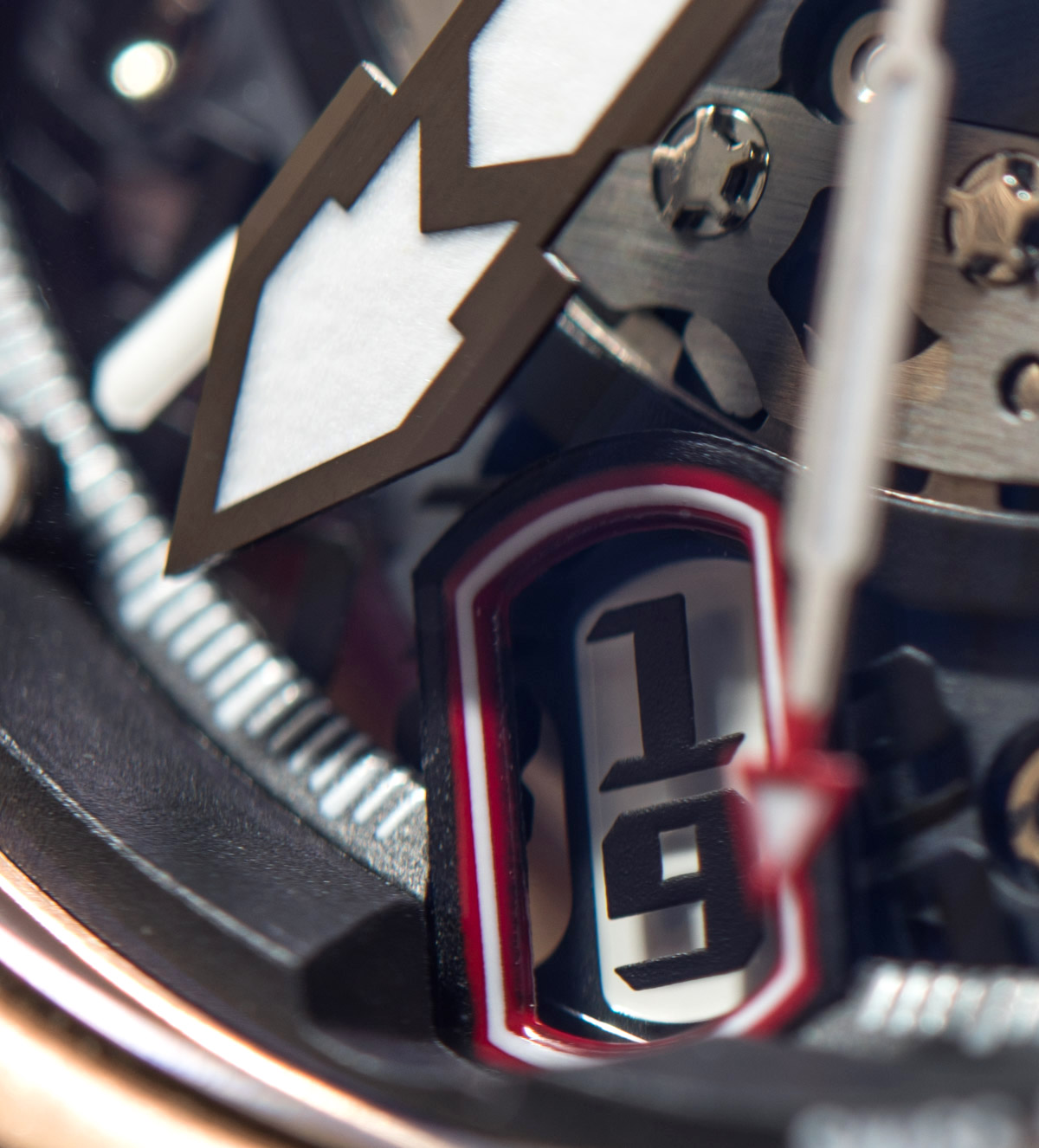
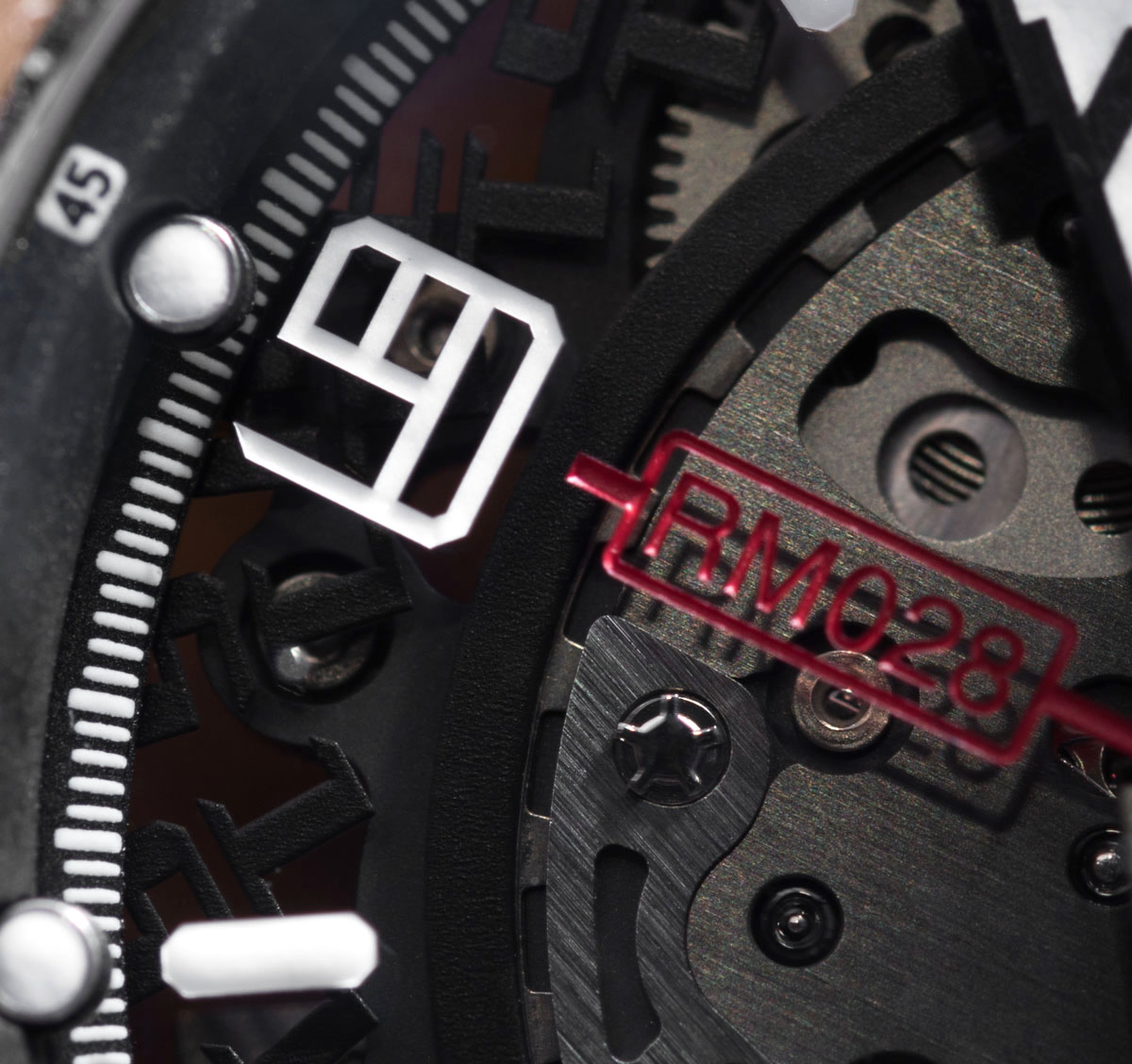
Produced by Vaucher – that is owned by the Sandoz family who also own Parmigiani Fleurier – the movement, on show via the translucent dial, manages to keep the pace with the Richard Mille-made case (RM cases are produced at the brand’s ProArt manufacture that I visited here a few years ago). It doesn’t boast the usual range of Geneva stripes, perlage and such, but all surfaces have been treated in some way, disguising their lowly machined origins. Would some retro, high-polished copy-cat anglage here and there be an absolute no-no on these watches? I think not. In my mind it would be quite the middle finger to the historical brands, saying something like “we can do this, if we want, now you try doing what we can.” Pricing notwithstanding, come to think of it, RM actually has a long track record of staying away from such nonsense the same way it isn’t condescending in its description of its watches or brand – if not for the sometimes way too over-the-top technical descriptions that have been, I am sure, written with the specific intention of making them intimidating through their technical complexity. That I’d love to see RM do less of and scale a bit back from.
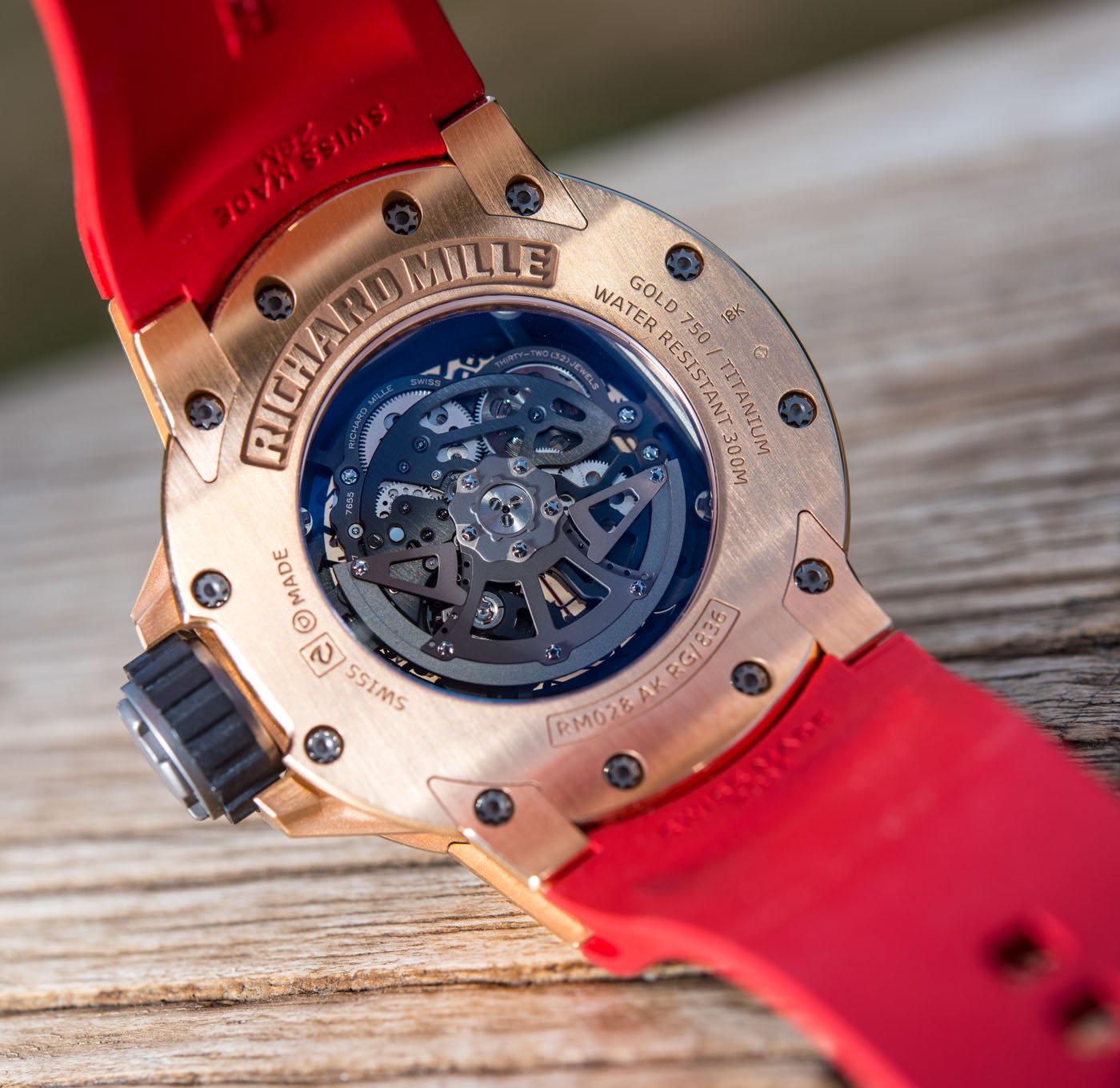
The movement inside the massive case is the RMAS7 that, as I said, measures 30.25mm x 28.45mm x 4.33mm – that’s really quite thin for an automatic with a full size rotor and a large date display and a 55-hour power reserve –, it has a variable inertia winding rotor with arms in grade 2 titanium, a flange in grade 2 titanium, 6-positional adjustment via grade 5 titanium screws, ribs in 18-carat, high palladium content white gold, a weight segment in a tungsten-cobalt alloy, ceramic ball bearings and winds in anti-clockwise direction. I will not accept any origin for this rotor assembly other than a watch industry engineer’s wet dream. The Glucydur balance wheel boasts a moment of inertia of 4.8 mg•cm2 and an angle of lift 53º, runs at a standard frequency of 4Hz, and has Incabloc 908.22.211.100 transparent shock protection.
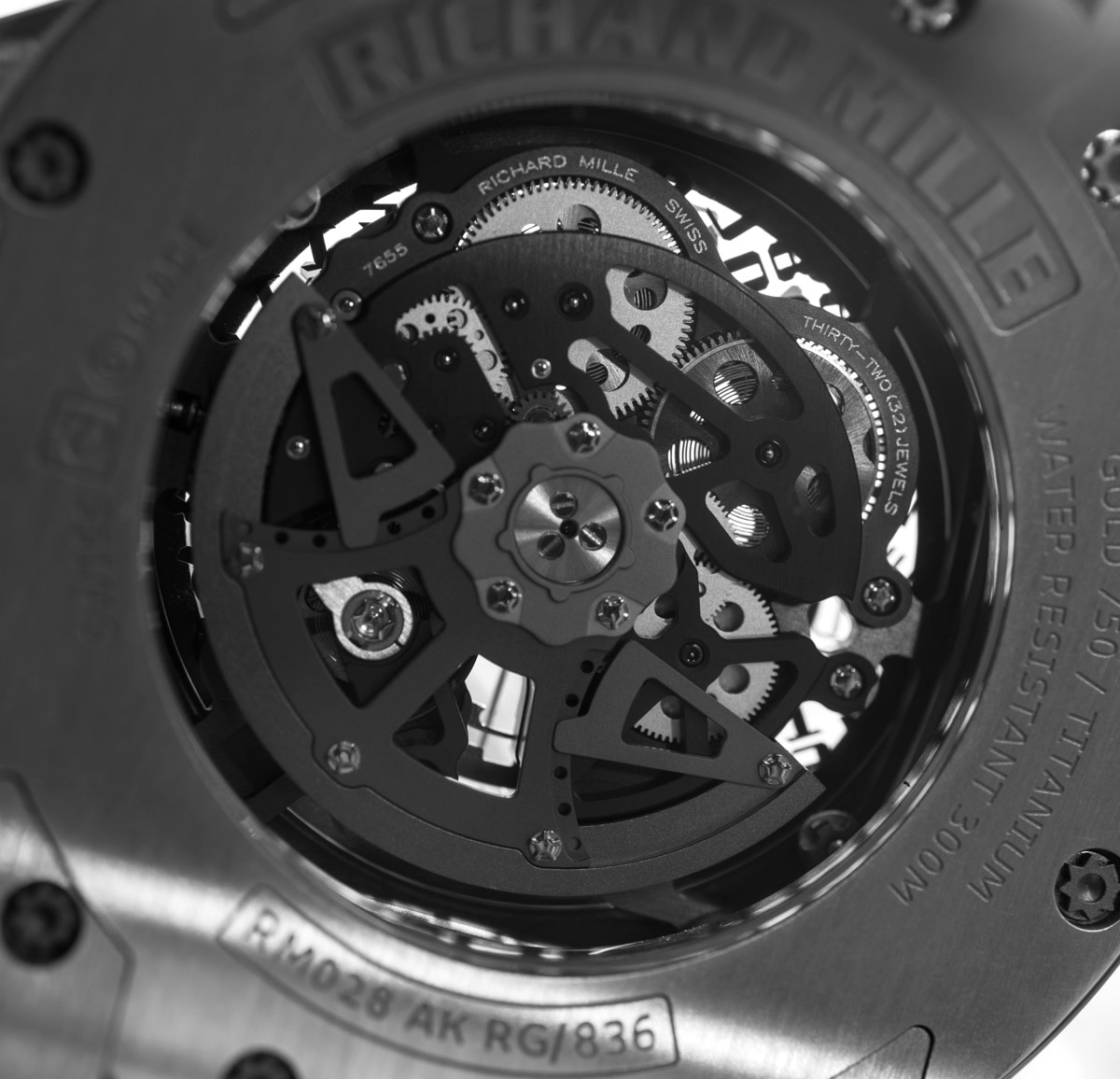
Movement finishing includes bottom plate and bridges in hand-ground titanium wet sandblasted and PVD treated, anglage and polishing by hand, hand polished locking sections, burnished pivots, diamond polished sinks on the bridge side, pinions with undercuts, sandblasted and rhodium-plated, beveled wheels, while the steel parts exhibit sapphire blasted surfaces and hand-performed anglage and polishing, while the screw slot and screws have been beveled and polished with rounded and polished tips. Perhaps this list of truly elaborate surface treatments will suffice to convince us how we’ve grown overly used to the same norm of movement decorations that we see on 99% of all luxury watches, just performed to different extents and with varying levels of dedication to quality. Should these be made easier to appreciate in a Richard Mille? With all the above said, yes, I think they should be.
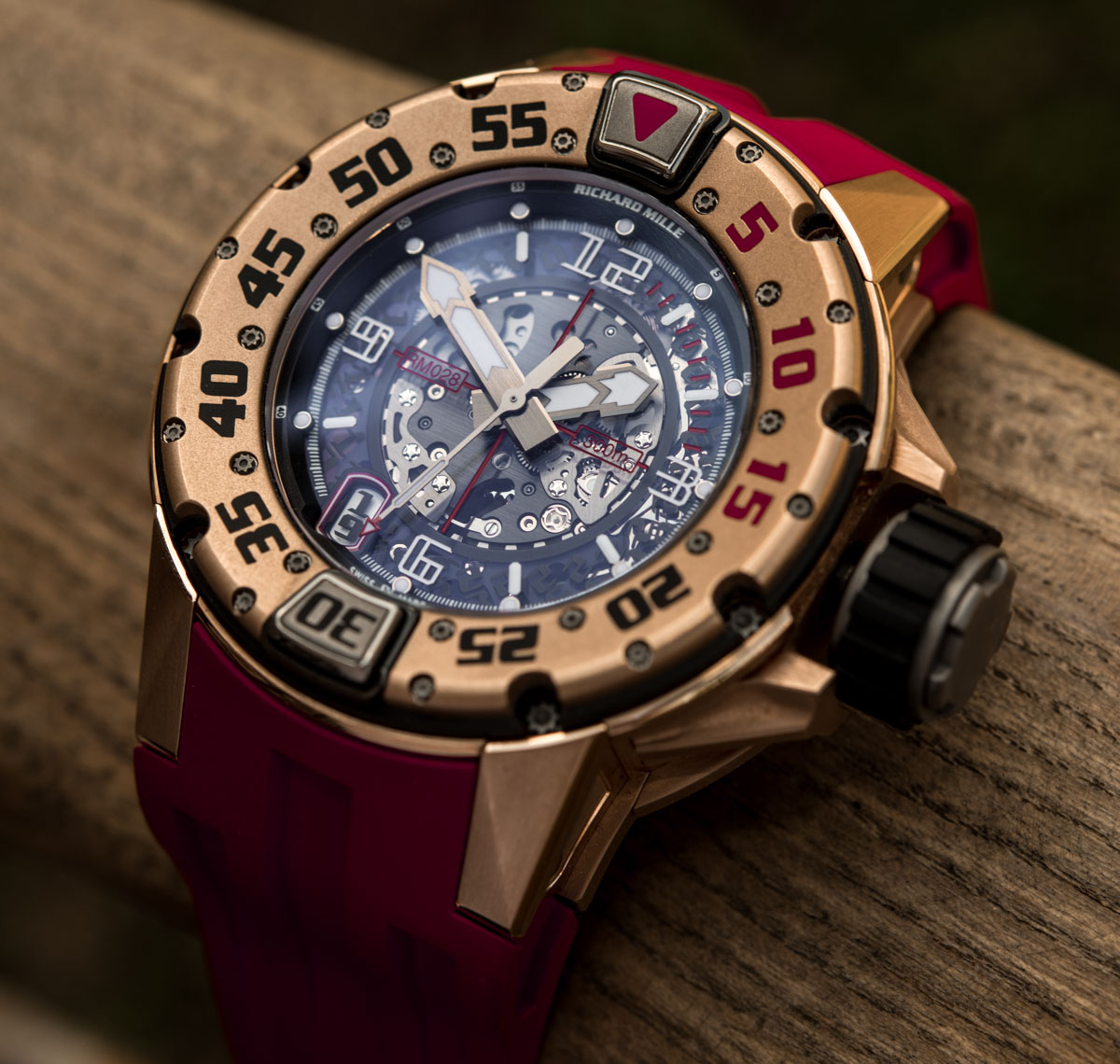
With all this said, is the very existence of an all gold watch with the weight of a small sized dog something to be frowned upon in the realm of Richard Mille? Surely not, as, like the brand itself, this particular watch exists in a cleverly calculated and well-found niche, being one of the few all-gold watches within the line-up. That being said, upon seeing someone wearing this particular RM 028 in red gold I’d think to myself: “well, there’s someone who doesn’t get this brand at all” – or, in the least, doesn’t care about a lot of what makes it so great. As such, to end on a personal note, was I to get a Richard Mille, I wouldn’t trade their unmatched lightweight, wearing comfort and unique looks for the bling of gold and the familiar look of a diver.
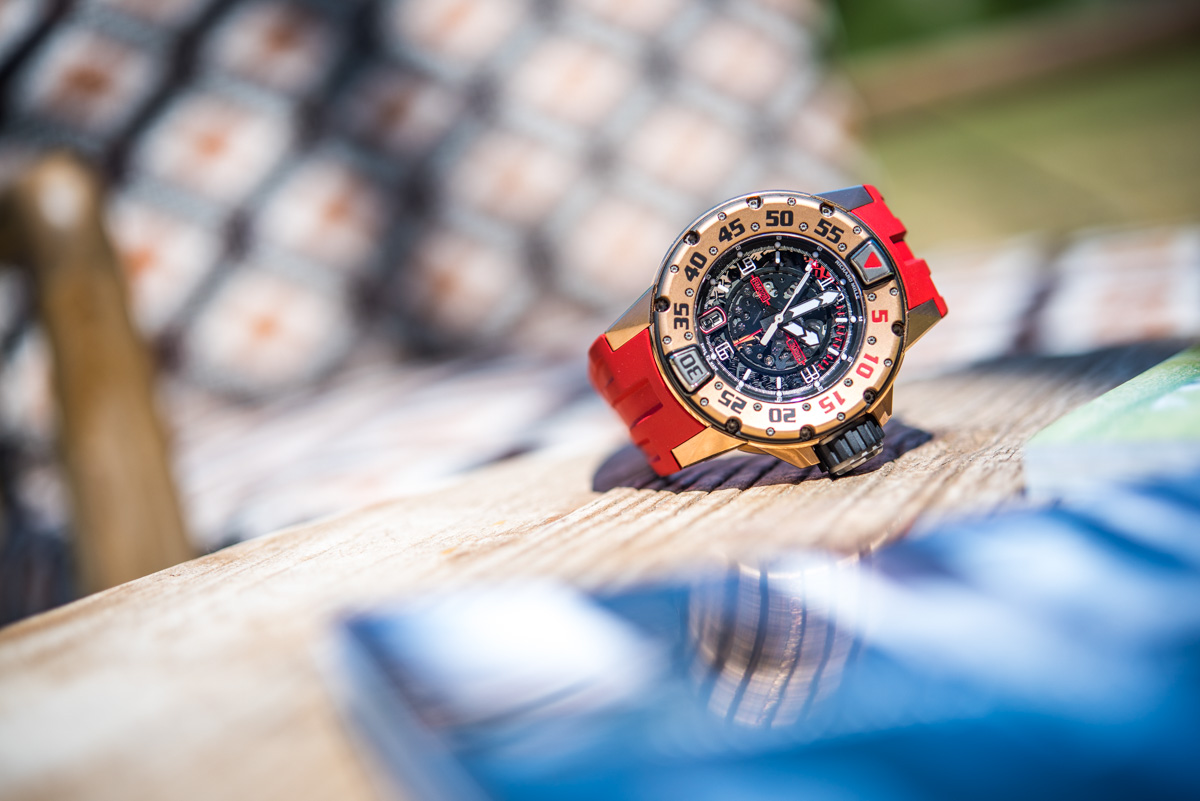
Make no mistake, in the metal this watch looks and feels as though it could match any other luxury diver out there with utmost ease. It’s so incredibly well made with a look and feel that’s as intimidating as it is purposeful. But not even that can hide the fact that it, by design, lacks a few too many of Richard Mille’s well-found strong points.
Price for the Richard Mille RM 028 Diver in red gold is £126,500, including VAT. richardmille.com

